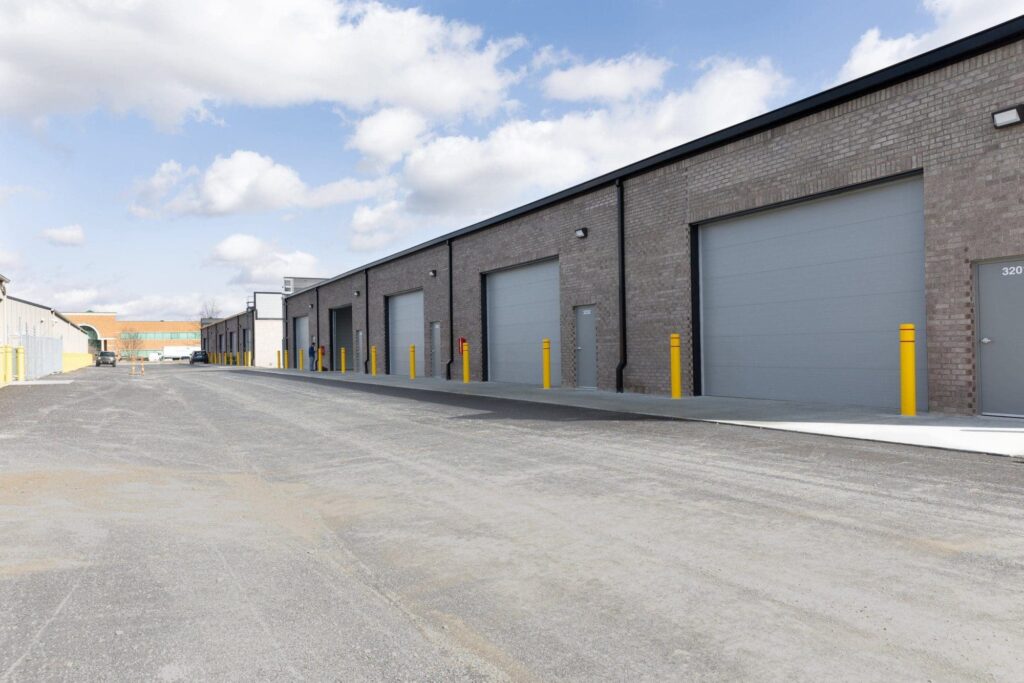The problem is that your space is becoming cluttered, or you don’t know how to organize from the jump. It’s time to learn about maximizing your small business space. There are plenty of ways to go about this and we will talk about a few of those starting with the most important things to think about when this arduous task arises. Our first tip to maximize your small warehouse space is to understand all of what you are working with. This can be a variety of things from the size of your space to the seasonal inventory storage that your company may need to account for. Get those ducks in a row before you begin. It will make piecing the puzzle together a whole lot easier. Some businesses require racks, others require simple cubbies for storage. It’s also important to know what amenities the warehouse space offers.
What All Should You Think Of For Inventory Needs?
Most of the tenants at RISE Commercial District don’t require a full force inventory system, but that doesn’t mean you should discount the inventory completely. It’s common to take the easy way out and to throw your stuff on the shelves with no system in place mentioning what the items are and how they are organized.
One aspect of inventory management is making sure you understand seasonal inventory demands. Creating a space for the ups and downs, mostly the ups, of inventory is important. The last thing you need is to have a full shelf of inventory when peak season comes around. This will make a messy warehouse and no one likes a messy warehouse. However, a messy warehouse is much better than an empty warehouse. Understanding your lead times for the products that come into your warehouse is important.
Next on the list is the Pareto principle. Understanding that 80% of warehouse activity comes from 20% of inventory is important. Crafting your organization methods into the activity is helpful. After all, no one wants to keep the most important product on the top shelf because this will eat away at the time it takes to pull down and restock the item.
Here is a list of things you can think about when organizing your business space with regards to inventory:
- How much space is in the warehouse?
- How large are my products that I am shipping?
- When is peak season and how much products do I typically have (if anything, overestimate)?
- Use containers to sort products in a manner that makes sense
- Use the Pareto principle. (80% of activity comes from 20% of goods).
- Vertical storage capabilities
- Calculate your warehouse capacity usage (below)
Calculate My Warehouse Capacity Usage
So, you know how much inventory you have and what your current space looks like, but how do you know there isn’t a better option for yourself? With 300 SqFt warehouses to 2500 SqFt flex spaces, RISE offers a variety of warehouse rental types. To calculate the capacity of a warehouse, you will need the total usable space first, followed by the capacity. This is the total sqft. – non-storage space sqft. Next you need to add in the height of the warehouse to utilize the vertical aspect of storage space. To do this. You need the usable space in sqft multiplied by the maximum height in ft.
Example:
Part 1. 1000 sqft-100 sqft (small bathroom) = 900 sqft of usable space.
Part 2. 900 sqft of usable space * 14 ft ceilings = 12,600 cubic feet (storage capacity)
Notice how we turned a 1000 square foot small warehouse space into a 12,600 sqft space. Brilliant!
Note: you need to remove some space for yourself. After all, this is perfectly packed in without the ability to get to the back of the space because it’s packed like a can of sardines.
How Do You Systemize Your Inventory Storage?
Now, you’ve heard that creating a system to store your goods is important, but you don’t know where to start. Before we dive into the organization of your goods, we suggest organizing your goods with the idea that your business will continue to grow. Leaving space for more inventory is a good idea as your small business may go from a garage to a small warehouse to a large warehouse. We suggest you feel comfortable in the world of product organization and to do this is to have enough space for you to operate. You can organize by inventory types, you can organize by inventory movement, or you can organize by a different characteristic such as color (or both)!
Tip 1: Picture your inventory organization similar to that of a closet. The items that you don’t touch much, leave those tucked away or in hard to reach places as these items aren’t considered important. Only you as a business owner can really determine the best way to organize.
Tip 2: Create a uniform storage process by using boxes, bins, or clothes hangers. This will keep the space nice and tidy.
Tip 3: Organize by product or use type. If you have 10 lines of products, organize them that way. If you have tools that are used for a specific practice, organize them that way.
Tip 4: It’s almost impossible to order the correct amount of products. If you have products that have been sitting in inventory for over 3 years, don’t be afraid to get rid of them. One extra tip to this is to throw a sale for those products OR donate them away.
There is a whole lot of information that goes into organizing your warehouse space. It is an overwhelming task to take on by yourself. Don’t be afraid to get with a friend to talk about the way that they would organize. Don’t worry, if you outgrow your space at RISE Commercial District, we will help you find a space to move within our facility.



